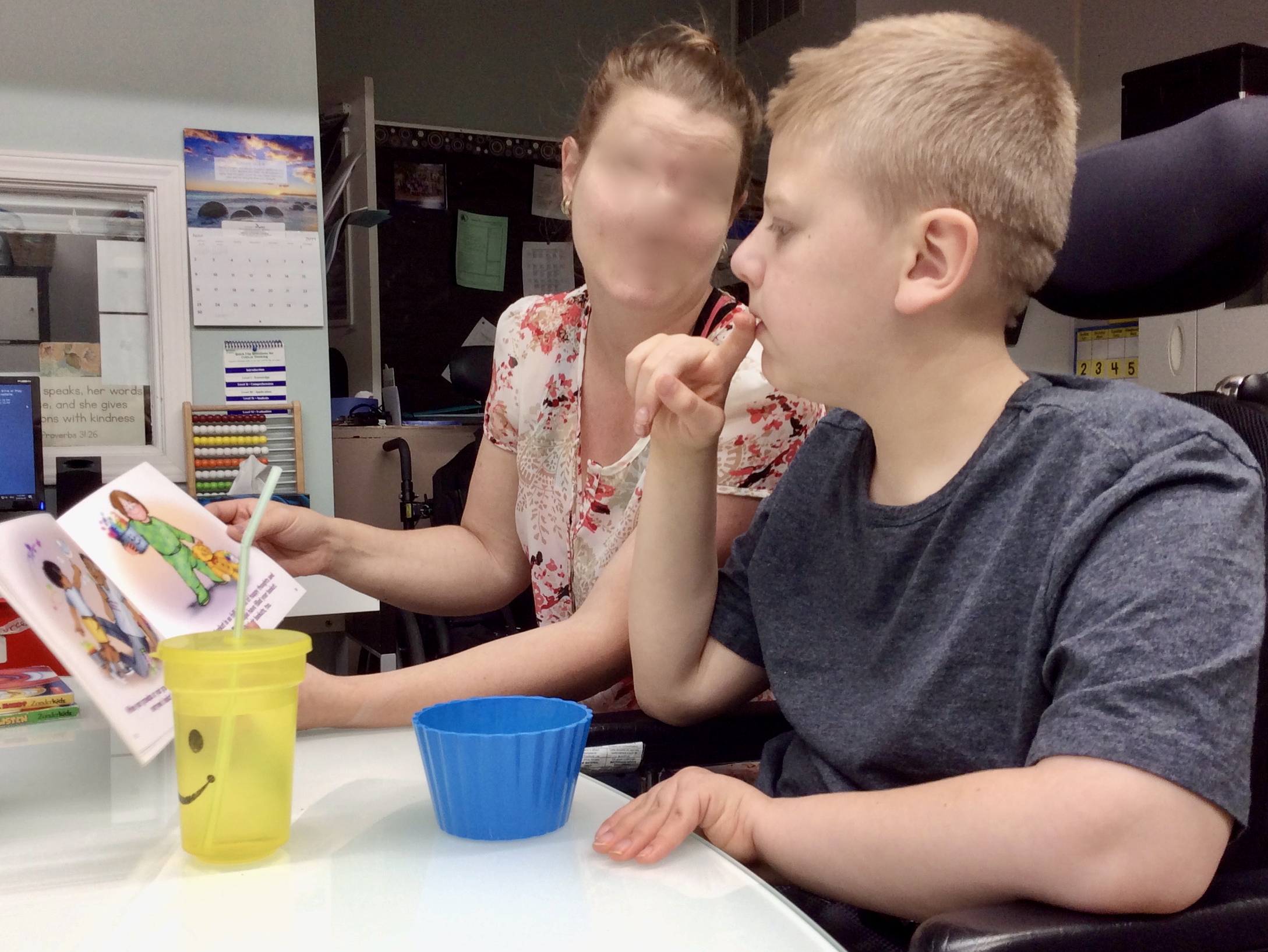Module 7: Communication
Communication Is...
Speech
Speech, or talking, is oral communication, spoken by one person and understood by another.
Reading
Reading is the way we recognize, decode, and understand written words.
Writing
Writing is the way we express our ideas using text.
Technology
Technology is a way to connect electronically, using social networking and messaging. Technological forms of communication include non-text-based communication, such as picture symbols, emojis, or videos.
Movement
Movement can express our bodily state, from fidgeting and moving away from discomfort, to nodding or shaking our head to indicate “yes” or “no” or reaching toward an object to show and say that, “I want that ball.”
Facial Expression
Facial expressions often reflect and communicate how we are feeling or express what we like and don’t like. The way we look or avoid looking can also reveal how we are feeling.
Gestures
Gestures, or movements in the hands or other parts of the body can express meaning. These gestures are often made in conjunction with sounds or facial expressions. It could be a touch on another’s arm to communicate that we need help, or a point in the direction we want to move toward. Sign language is a formalized system of gestures.
Sounds, Pitch, and Vocalizing
Changing the pitch of vocalizations expresses meaning. Depending on the pitch, the same vocalization can mean different things, such as asking a question, commenting, or expressing frustration or pleasure. Sounds and vocalizations can also have meaning, such as saying “nu-uh” to mean “no.”
Students with Complex Communication Needs
Students with Complex Communication Needs (CCN) may not communicate by speech, reading, and writing. They may also be unable to communicate electronically using social media or texting. However, they can communicate in other ways, such as by using gestures, body language, facial expression, their eyes, or sounds.
All of us use these other forms of communication every day. However, students with CCN rely more on these forms to make themselves understood.
